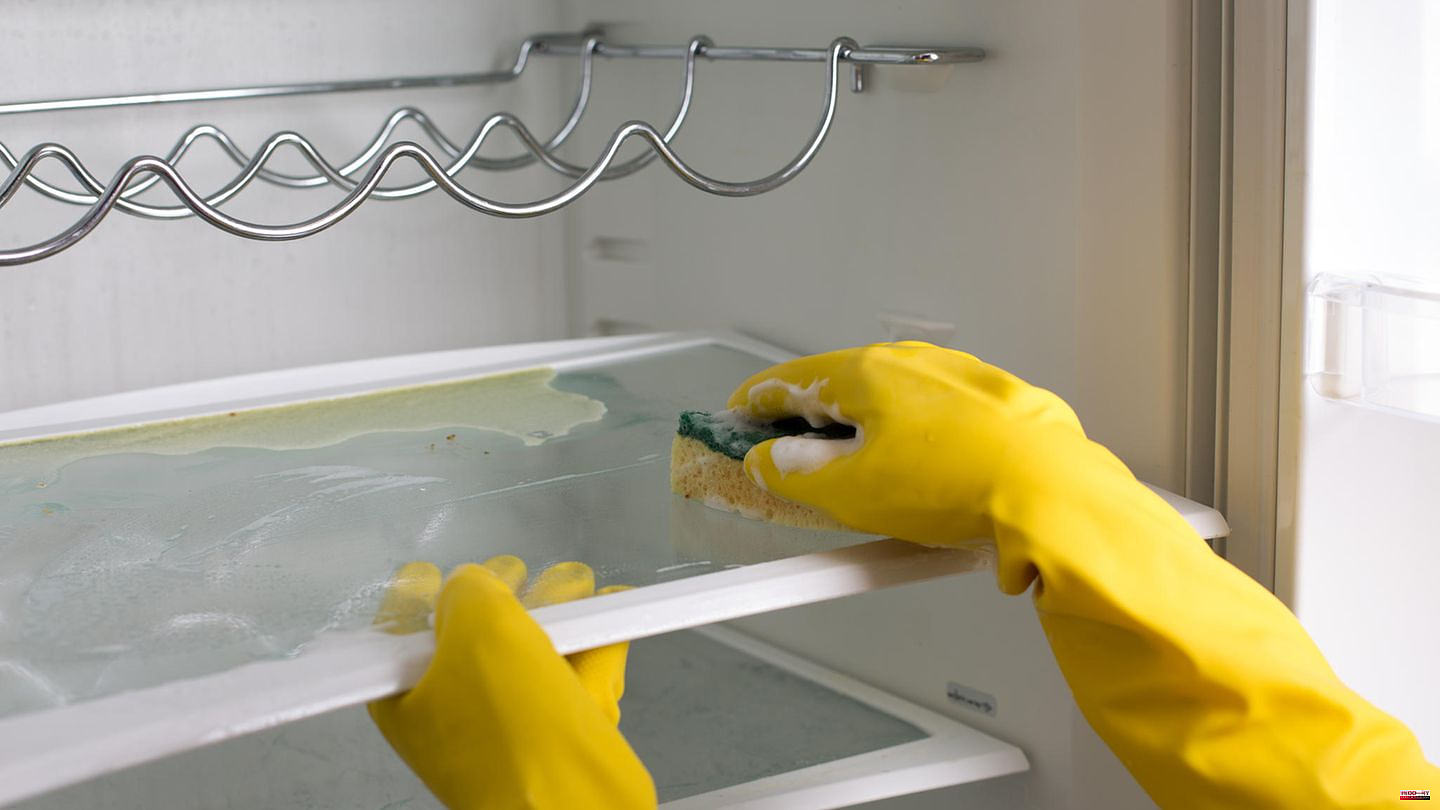Research from the University of Arizona has found that more bacteria live in a refrigerator than on the edge of a toilet. Depending on the degree of contamination, there are millions of germs per square centimeter inside the device. This is not only disgusting, but also unhygienic. This makes it all the more important to clean the refrigerator regularly: ideally at least once a quarter. This will reduce possible pathogens and minimize unpleasant odors emanating from the interior. How and with what means the germs can be removed and what you should pay attention to when storing food is explained step by step in this article.
It doesn't really matter which cleaning utensils you use to clean the refrigerator. The only important thing is that you do not use old rags or sponges that are no longer completely germ-free. To avoid scratching sensitive surfaces or seals, it is advisable to have a soft cloth within easy reach. When it comes to choosing the right cleaning product, there is no right or wrong way. Use a hygiene cleaner for refrigerators, but alternatively you can also use an all-purpose cleaner or dishwashing liquid - however, scouring milk is not recommended. If you want to avoid chemicals, choose a tried and tested home remedy: vinegar water. To do this, mix 100 milliliters of vinegar with 200 milliliters of water. After you have cleaned the refrigerator with this, wipe all surfaces again with fresh water.
If you want to clean the inside of your refrigerator, you must first remove all of the contents. Depending on the season, it is best to store this in a cool box on the terrace or balcony - this is especially true for perishable foods such as dairy products, fish or meat. Then remove all loose glass plates, shelves and vegetable compartments. Before cleaning, switch off the device and disconnect it from the power supply. Important: If there are freezer compartments in the refrigerator, melt water may collect in them as a result of defrosting. To catch it, place a clean kitchen towel underneath. Now proceed as follows:
In fact, correct or incorrect storage has a major influence on the hygiene in the refrigerator. The fact is: There are different cold zones in every appliance, which can make perishable foods last longer - provided you store them correctly: Fruit and vegetables are stored at the bottom. Above this, including below, is the coldest area (0° C to 4° C); fish, sausages and meat should be sorted here. In the middle area, where it is warmer (5°C to 7°C), dairy products and dishes that have been freshly prepared belong. It is warmest at the top (8° C), which is why you should only store foods here that do not spoil quickly, such as jam, eggs or butter.
And one last note: Many foods are often mistakenly stored in the refrigerator even though it is far too cold there - such as tomatoes, bananas, onions and garlic. These products are more comfortable in cool, dry places (around 13°C).
Sources: Ökotest, Utopia
This article contains so-called affiliate links. Further information are available here.












